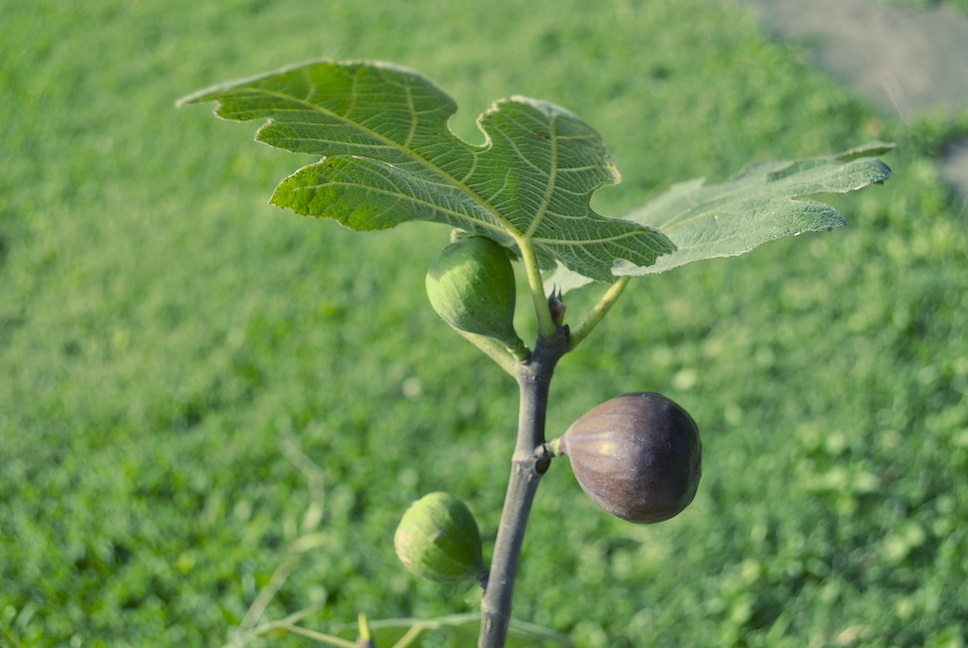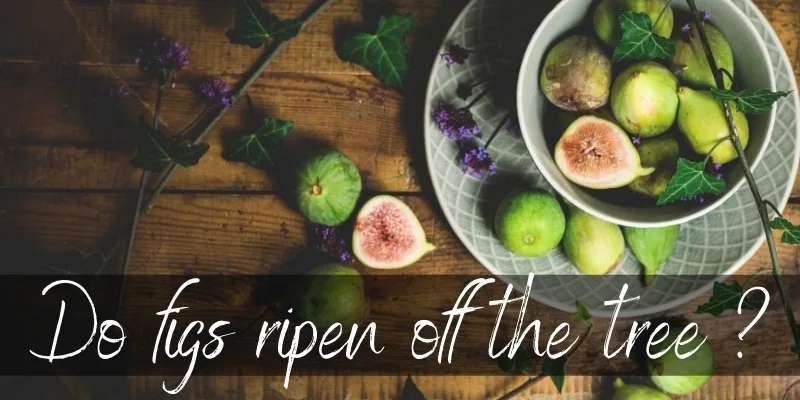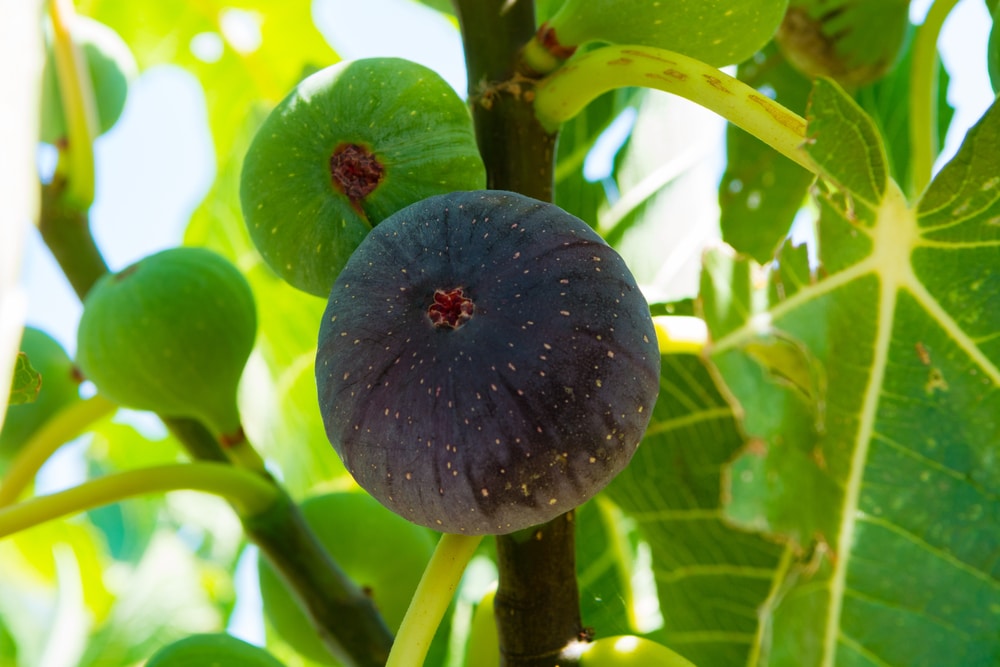Understanding the Fig Ripening Process
Figs are a unique fruit that undergo a complex ripening process, making it essential to understand the factors that influence their readiness for consumption. The ripening process of figs is a highly regulated and coordinated series of events, involving a combination of hormonal, enzymatic, and environmental factors. Ethylene production, a natural plant hormone, plays a crucial role in triggering the ripening process. As figs mature, they produce more ethylene, which stimulates a series of biochemical reactions that ultimately lead to the breakdown of cell walls, softening of the fruit, and the development of its characteristic flavor and aroma.
Sugar content is another critical factor in the ripening process of figs. As the fruit matures, the starches convert to sugars, resulting in a sweeter and more flavorful product. Environmental factors, such as temperature, humidity, and sunlight exposure, also impact the ripening process. For instance, figs typically ripen more quickly in warmer temperatures and with adequate moisture. Understanding these factors is essential to determining when figs are ready to eat, as it allows growers and consumers to optimize the ripening process and enjoy the fruit at its best.
When do figs get ripe? The answer lies in the intricate interplay of these factors. By monitoring the fruit’s color, texture, and stem attachment, growers can determine the optimal time for harvest. However, the ripening process can be influenced by various factors, including the specific fig variety, growing conditions, and handling practices. Therefore, it is essential to develop a comprehensive understanding of the fig ripening process to ensure that the fruit is picked at the optimal time and enjoyed at its peak flavor and texture.
Visual Cues for Fig Ripeness
Identifying the visual signs of a ripe fig is crucial for determining when the fruit is ready to eat. As figs mature, they undergo a series of physical changes that can be observed with the naked eye. One of the most noticeable changes is the color of the fruit. A ripe fig will typically turn from a deep green to a brown or purple color, depending on the variety. However, it’s essential to note that some fig varieties may not change color significantly, so it’s crucial to consider other visual cues as well.
The texture of the fruit is another critical visual cue for fig ripeness. A ripe fig will be slightly soft to the touch, but still firm enough to hold its shape. If the fig is too soft, it may be overripe. The stem attachment is also an important indicator of ripeness. A ripe fig will come off the tree easily, leaving a small piece of stem attached to the fruit. If the fig is difficult to remove from the tree, it may not be ripe yet.
When do figs get ripe? By monitoring the visual cues of color, texture, and stem attachment, growers and consumers can determine the optimal time for harvest. However, it’s essential to remember that these visual cues can vary depending on the specific fig variety, growing conditions, and handling practices. Therefore, it’s crucial to develop a comprehensive understanding of the visual signs of fig ripeness to ensure that the fruit is picked at the optimal time and enjoyed at its peak flavor and texture.
In addition to these visual cues, it’s also important to consider the overall appearance of the fruit. A ripe fig will have a glossy appearance and a sweet, fruity aroma. If the fig appears dull or has an off smell, it may not be ripe yet. By combining these visual cues with other methods of determining ripeness, such as gently tugging on the fruit or checking for softness, growers and consumers can ensure that their figs are perfectly ripe and ready to eat.
How to Check for Fig Ripeness
Checking for fig ripeness is a straightforward process that requires attention to detail and a gentle touch. To determine if a fig is ripe, start by gently tugging on the fruit. A ripe fig will come off the tree easily, while an unripe fig will be difficult to remove. Next, check the fig’s softness by gently squeezing it. A ripe fig will be slightly soft to the touch, but still firm enough to hold its shape.
Another way to check for fig ripeness is to smell the fruit. Ripe figs give off a sweet, fruity aroma that is unmistakable. If the fig does not have a noticeable scent, it may not be ripe yet. Finally, check the fig’s color and texture. A ripe fig will have a deep brown or purple color, depending on the variety, and a smooth, glossy texture.
When do figs get ripe? By following these simple steps, growers and consumers can determine the optimal time for harvest. However, it’s essential to remember that figs continue to ripen after they are picked, so it’s crucial to handle them gently and store them properly to maintain their freshness and flavor.
In addition to these methods, there are a few other ways to check for fig ripeness. One way is to check the fig’s stem. A ripe fig will have a dry, brittle stem that comes off easily, while an unripe fig will have a green, moist stem. Another way is to check the fig’s weight. Ripe figs are typically heavy for their size, while unripe figs are lighter.
By combining these methods, growers and consumers can ensure that their figs are perfectly ripe and ready to eat. Whether you’re a seasoned fig grower or just starting out, following these simple steps will help you enjoy the best flavor and texture from your figs.
The Impact of Variety on Fig Ripening
Different fig varieties can significantly impact the ripening process, making it essential to understand the unique characteristics of each variety. Some fig varieties, such as the ‘Brown Turkey‘ and ‘Black Jack’, are known to ripen more quickly than others, while varieties like the ‘Sierra’ and ‘Celeste’ may take longer to mature.
One of the main factors that affects the ripening process is the sugar content of the fig. Varieties with higher sugar content, such as the ‘Brown Turkey’, tend to ripen more quickly than those with lower sugar content, such as the ‘Sierra’. Acidity is another factor that can impact the ripening process, with varieties that are more acidic, such as the ‘Black Jack’, tend to ripen more slowly than those that are less acidic, such as the ‘Celeste’.
When do figs get ripe? The answer to this question can vary significantly depending on the specific fig variety. For example, the ‘Brown Turkey’ fig typically ripens in mid-summer, while the ‘Sierra’ fig may not be ready until late summer or early fall. Understanding the unique characteristics of each fig variety can help growers and consumers determine the optimal time for harvest and ensure that their figs are perfectly ripe and ready to eat.
In addition to sugar content and acidity, other factors such as climate, soil quality, and watering practices can also impact the ripening process. For example, figs grown in warmer climates tend to ripen more quickly than those grown in cooler climates, while figs grown in well-draining soil tend to ripen more slowly than those grown in poorly draining soil.
By understanding the unique characteristics of each fig variety and how they impact the ripening process, growers and consumers can optimize their growing conditions and harvesting practices to ensure that their figs are perfectly ripe and ready to eat.
Environmental Factors Affecting Fig Ripening
Environmental factors play a crucial role in the fig ripening process. Temperature, humidity, and sunlight exposure can all impact the ripening speed and quality of figs. When do figs get ripe? The answer to this question can vary depending on the specific environmental conditions in which the figs are grown.
Temperature is one of the most significant environmental factors affecting fig ripening. Figs typically ripen more quickly in warmer temperatures, with optimal ripening occurring between 65°F and 75°F (18°C and 24°C). Temperatures above 85°F (29°C) can cause figs to ripen too quickly, leading to a loss of flavor and texture.
Humidity is another important environmental factor that can impact fig ripening. Figs require a certain level of humidity to ripen properly, with optimal ripening occurring at a relative humidity of 60% to 80%. If the humidity is too low, figs may not ripen properly, while high humidity can lead to fungal diseases and spoilage.
Sunlight exposure is also essential for fig ripening. Figs require full sun to partial shade to ripen properly, with optimal ripening occurring in areas that receive direct sunlight for at least 6 hours per day. Insufficient sunlight can lead to poor flavor and texture, while excessive sunlight can cause figs to become overripe and spoil.
By understanding the impact of environmental factors on fig ripening, growers and consumers can optimize their growing conditions and harvesting practices to ensure that their figs are perfectly ripe and ready to eat. This may involve providing shade for fig trees during periods of intense sunlight, using irrigation systems to maintain optimal humidity levels, or harvesting figs at the optimal temperature.
In addition to these environmental factors, other factors such as soil quality, watering practices, and pest management can also impact fig ripening. By considering all of these factors, growers and consumers can ensure that their figs are of the highest quality and flavor.
Common Mistakes to Avoid When Checking for Fig Ripeness
When checking for fig ripeness, it’s easy to make mistakes that can lead to disappointment and wasted fruit. One of the most common mistakes is squeezing the fruit too hard, which can damage the delicate skin and cause the fig to spoil prematurely. Another mistake is relying solely on color, as some fig varieties may not change color significantly as they ripen.
Ignoring the stem is another common mistake. A ripe fig will typically come off the tree easily, leaving a small piece of stem attached to the fruit. If the fig is difficult to remove from the tree, it may not be ripe yet. Additionally, some people may mistake a fig that is past its prime for one that is not yet ripe. A fig that is past its prime will typically be soft and mushy, with a sour or unpleasant smell.
When do figs get ripe? By avoiding these common mistakes, you can ensure that your figs are perfectly ripe and ready to eat. It’s also important to remember that figs continue to ripen after they are picked, so it’s essential to handle them gently and store them properly to maintain their freshness and flavor.
Other common mistakes to avoid include not checking for fig ripeness regularly, as figs can go from unripe to overripe quickly. It’s also important to not rely solely on one method of checking for ripeness, as different methods may be more effective for different fig varieties.
By being aware of these common mistakes and taking steps to avoid them, you can enjoy perfectly ripe figs and get the most out of your harvest. Whether you’re a seasoned fig grower or just starting out, following these tips will help you to achieve success and enjoy the delicious flavor and texture of perfectly ripe figs.
Storing and Handling Ripe Figs
Once you’ve harvested your perfectly ripe figs, it’s essential to store and handle them properly to maintain their freshness and flavor. One of the best ways to store ripe figs is to refrigerate them. Place the figs in a single layer in a covered container and store them in the refrigerator at a temperature of 32°F (0°C) to 40°F (4°C). This will help to slow down the ripening process and keep the figs fresh for up to 5 days.
Freezing is another excellent way to preserve ripe figs. Simply wash and dry the figs, then place them in a single layer in a freezer-safe container or freezer bag. Frozen figs can be stored for up to 8 months and can be used in a variety of recipes, such as smoothies, baked goods, and desserts.
Cooking is also a great way to enjoy ripe figs. Figs can be used in a variety of dishes, such as jams, preserves, and sauces. They can also be grilled or roasted to bring out their natural sweetness. When cooking with figs, it’s essential to use them within a day or two of harvesting, as they can spoil quickly.
When do figs get ripe? By storing and handling them properly, you can enjoy your perfectly ripe figs for a longer period. Whether you’re a seasoned fig grower or just starting out, following these tips will help you to get the most out of your harvest and enjoy the delicious flavor and texture of perfectly ripe figs.
In addition to refrigeration, freezing, and cooking, there are several other ways to store and handle ripe figs. For example, you can dry them to make dried figs, which can be stored for up to 6 months. You can also make fig jam or preserves, which can be stored for up to a year.
By exploring these different storage and handling options, you can enjoy your perfectly ripe figs in a variety of ways and make the most of your harvest.
Enjoying Your Perfectly Ripe Figs
Now that you’ve learned how to determine when your figs are perfectly ripe, it’s time to enjoy them There are many ways to enjoy ripe figs, from simple snacks to elaborate desserts. One of the easiest ways to enjoy ripe figs is to eat them fresh, either on their own or paired with cheese, crackers, or bread.
When do figs get ripe? Once you’ve harvested your perfectly ripe figs, you can use them in a variety of recipes. Try pairing them with prosciutto and arugula for a simple salad, or use them in a fig and goat cheese tart for a more elaborate dessert. You can also use ripe figs in jams, preserves, and sauces, or dry them to make dried figs that can be stored for up to 6 months.
Another great way to enjoy ripe figs is to use them in baked goods, such as cakes, cookies, and muffins. Simply chop the figs and add them to your favorite recipe for a delicious and moist treat. You can also use ripe figs in savory dishes, such as stews and braises, for added flavor and nutrition.
In addition to these ideas, there are many other ways to enjoy perfectly ripe figs. Try pairing them with nuts, such as almonds or walnuts, for a healthy snack, or use them in a fig and honey smoothie for a delicious and refreshing drink. You can also use ripe figs in face masks and scrubs, as they are rich in antioxidants and have anti-inflammatory properties.
By getting creative with your perfectly ripe figs, you can enjoy them in a variety of ways and make the most of your harvest. Whether you’re a seasoned fig grower or just starting out, following these tips will help you to enjoy your delicious, ripe figs and make the most of your harvest.









